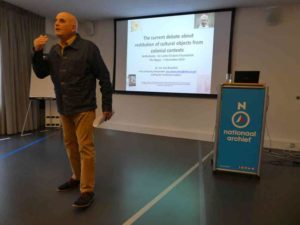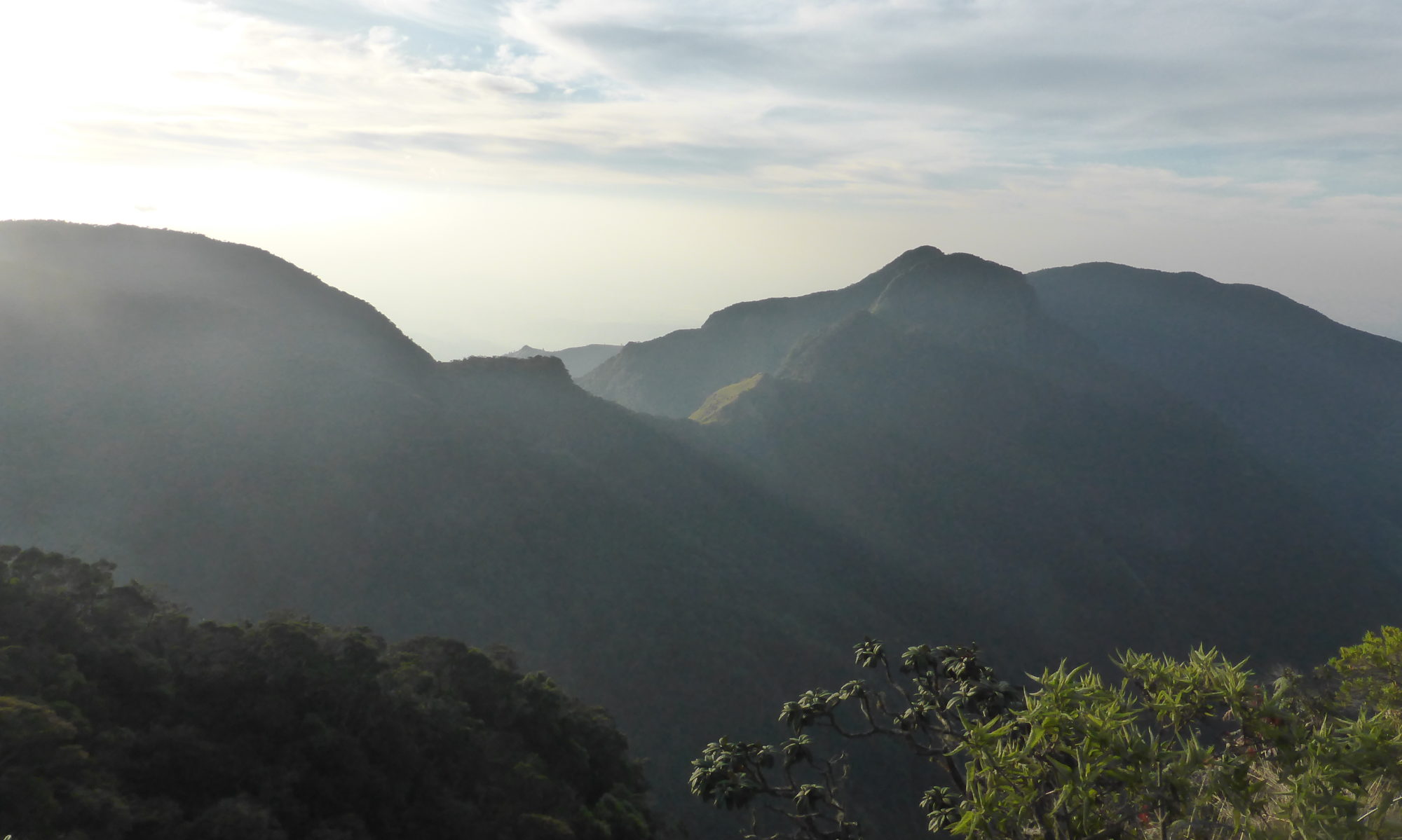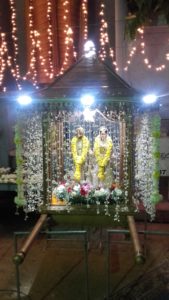By Bente de Leede & Deborah de Koning

Jos van Beurden PhD is an affiliated researcher at the Free University Amsterdam. As a scholar and writer he focuses, amongst other matters, on the protection and restitution of cultural heritage. He was one of the speakers at the event ‘Who own(s?) Heritage?’ held at the Dutch National Archives in Den Haag, November 2019, which was organised by Stichting Nederland-Sri Lanka. In this interview, young ambassadors of the Stichting, Deborah de Koning and Bente de Leede, ask him about his experience of the event and his work in the heritage sector.
Q. On the 5th of November you were the first invited speaker to deliver a presentation at the event ‘Who own(s?) Heritage?’. Your presentation was about the current debate on restitution of cultural objects from a colonial context. What was the main purpose of your contribution to this particular event?
‘There were two very specific reasons why I wanted to contribute to this event. The first was that I wanted to place the debate of restitution of cultural objects in a larger context – not limited to Sri Lanka. The second reason was that my presentation was a tribute to Pilippi De Silva, who was a predecessor to dr. Sanuja Kasthuriarachchi, the present director-general of the department of National Museums in Sri Lanka.’ Van Beurden elaborates on the former director-general: ‘De Silva has made an incredible contribution to the cultural restitution debate by visiting museums all over the world and making a museum inventory of cultural objects from the colonial period. At least two copies are also in the Netherlands, in Museum Volkenkunde in Leiden and the Rijksmuseum in Amsterdam. It is on the basis of this book that Sri Lanka made a list of cultural objects the country would like to see returned.’

Q. So you would say the initiative to discuss restitution lay primarily with Sri Lanka?
‘Yes. A similar kind of process happened in Indonesia. When, in 1975, Indonesia and the Netherlands discussed new cultural relations, Indonesia presented a wish-list with around 10.000 cultural objects in Dutch public collections that it wanted back. After tough negotiations this number was reduced to several hundreds of items that have been returned in the following years. There is a serious desire inside several former colonies to retrieve some cultural objects from former colonisers.’
Q. In your research you focus on cultural objects from a colonial context. What does that mean, exactly?
‘It means that an object is of significant cultural and historical importance to the country of origin, and that it has been lost in the colonial period. I make a division between three types of these objects, the first being for example war booty, objects confiscated by missionaries and objects smuggled by colonial administrators, soldiers, scientists, traders and so on. Secondly, there are many cultural objects deliberately produced by craftsmen, sometimes on demand, with the purpose of selling them to colonisers. These objects were handed over for money or by barter, and can be considered as a win/win situation. There is however a large grey area, a third group between these two categories: there are many objects of which we do not know their story and origin. For these objects we need provenance research [herkomstonderzoek, red.].’
Q. Following our question of what Van Beurden considered the most interesting contribution or presentation during the Heritage Event, he recalls:
‘One was a remark of Paul Russell – who works as a lawyer on, amongst others, cultural heritage: “When you have stolen something, you have to return it.” He worded that very straightforward, strong and clear, there is not much to discuss about that. What we see now, is that it takes the Rijksmuseum several years to go through this process of research and possible restitution. How long will it take then for all the other thousands of objects?’ In this context, Van Beurden thought dr. Sanuja Kasthuriarachchi’s remarks on the Blue Canon were also particularly interesting. When the Canon was discussed, Kasthuriarachchi suggested that objects such as the canon could also be researched, or exhibited, by a Sri Lankan museum.
Q. The ‘Blue Canon’ was a common thread in several presentations on November 5th. For those who did not attend the event: can you explain what this debate is about?
‘VOC soldiers captured the Blue Canon during the 1765 Kandyan war. It was obviously war booty’, Van Beurden argues. ‘The war was caused by Dutch agitation over the increase of cinnamon prices. The Dutch took the canon and several other objects and even returned one, a silver and gold holder of the relic of the tooth of the Buddha. The canon was stored in the Royal Cabinet of Curiosities and ended up in the Rijksmuseum in Amsterdam at the end of the nineteenth century. There it is currently on display. The canon was on the aforementioned inventory list of cultural objects and Sri Lanka asked for it in 1980, but the museum nor the Dutch government reacted positively.’
There are different positions in the present debate on restitution of cultural and historical objects from colonial contexts, Van Beurden emphasises, though his view on the matter is clear: ‘For some objects it seems obvious that they should be returned to their country of origin, especially when they are war booty. In 2017 the Rijksmuseum in Amsterdam started a project on the provenance of several of its objects with complicated histories. In 2019 researchers from the museum went to Sri Lanka, but to do more research on the background of the objects, not to discuss restitution. Why did it take two years for the museum to include Sri Lanka in this provenance research-project? In my opinion, the information exchange with Sri Lanka began two years too late. The Netherlands should admit that, from a 21st-century point of view, they should not have confiscated the Canon. Communications and relations between the Netherlands and Sri Lanka should be one of as much equality as possible.’
Q. Does it make a difference for you, in the restitution debate, if the country that asks for the object will have a place to conserve the cultural and historical objects in a secure way (for instance in a museum)?
‘Not in the first place. In my opinion, a restitution process should have three steps: firstly, the former colonising country should admit that from its present perspective, it was wrong to take the object(s) concerned during the colonial era. Secondly, the former coloniser should make clear that it wants to build a new relationship, based on mutual respect and equality. The physical return of the object is the third step, but the two parties might also even agree that this step will not be necessary. Some countries are not so much interested in the object itself, but mainly want the former colonising country to include the complete story in their museums. In such instances, the first two steps are enough. They are just as important for a fruitful conversation about these objects.’
Van Beurden brings forward another restitution debate, that he compares to that about the Blue Canon: the Benin objects have been the subject of many restitution discussions. In 1897 British soldiers took thousands of objects from present-day Nigeria during a violent clash with the king of Benin. Around 140 of these ‘Benin objects’ are in the Netherlands. In 2010, the Benin Dialogue Group started, consisting of the government of Nigeria, the Royal Benin court and the Edo State, where the court is located, next to a number of European museums, such as the Dutch National Museum of World Cultures. One of the goals of the group is to make the objects accessible in Nigeria in, for example, permanent exhibitions. Van Beurden: ‘Looking at these examples of war booty from Sri Lanka and Nigeria, European countries and museums should start returning this type of objects. It is obvious how there were acquired. I do see indications that Nigeria wants all of the thousands of Benin objects returned, and the European participants should recognise that the African partners are more entitled to them. We should avoid a neo-colonial position by demanding certain conditions of how the former colony should treat the object after restitution.’
Q. Most of the objects we have discussed here are kept inside of museums. Are there also objects like these outside of museums, and do you have an example of how restitution works in these cases?
Van Beurden gives an example from the Dutch East Indies, current Indonesia, where Governor-general of the Dutch East Indies, Mr. J.C. Baud, received several gifts during his time in office. ‘He once received the pilgrim’s staff of prince Diponegoro, national hero in Indonesia and leader of the anti-colonial Java War (1825 – 1830). The heirs of J.C. Baud still owned this staff. In 2015, the family decided to return it to Indonesia, where it is exhibited at the National Gallery, since they felt that it belonged in Indonesia more than in their home. An interesting, rare and very clear case: the family was not obliged to return it, it was not war booty but a gift – but they decided to return it themselves.’
Queen Juliana is also known for returning some gifts. ‘The Dutch royal family owned several paintings and drawings from Indonesian artist Raden Saleh. The painter had given some of his works to the royal family, because they had provided him the opportunity to study in Europe. Queen Juliana decided to return some of the paintings to Indonesia in the 1970s. Since these drawings were private gifts as well, there was no legal obligation to return them.’
Van Beurden continues: ‘A dilemma surrounding both the pilgrim’s staff and the paintings, however, is that they were received by people in their function as public officials. I think, it raises the question whether the possessors of such objects can fully decide by themselves to sell it. Both the Baud family and Queen Juliana have solved this in a constructive way. In 2014, another Raden Saleh painting, Boschbrand (Forest fire), was auctioned off by Juliana’s grandchildren to the highest bidder, the National Gallery in Singapore. This raised serious objections with Dutch art historians [and the Dutch Parliament red.] in 2016, and Dutch museums argued that, since the painting is part of Dutch history and heritage, they would have wanted the opportunity to purchase it first.’ Van Beurden, amongst others, asks however, ‘would Indonesia not have been a more fitting residence for this show piece?’
Q. As colonial encounters are border-crossing, how do you think the current COVID crisis affects the processes of restitution?
While no objects or people can travel, ‘there is time now, for reflection and research.’ Van Beurden also remarks that in global heritage research there has been enough experience in long-distance, digital communication. ‘People working in museums and involved in this debate are used to international communication. I myself of course miss the presentations and meetings abroad, but I do notice among colleagues an increased willingness to help each other out with information.’
Q. You have worked on return of cultural heritage in many countries, do you have any specific experience with this process and discussion in South Asia – or Sri Lanka – specifically?
‘My focus is on the global level – that is why I could contextualise the discussion we had about Sri Lanka at the Heritage Event.’ Van Beurden does have personal experience in South Asia though: ‘I have lived in South Asia, mainly Bangladesh, for three years in the 1970s. At that time I was traveling through Asia with my partner.’ He adds: ‘In South India we wanted to cross the Palk Strait to Sri Lanka, but due to the monsoon we had to take an airplane. Since we had no money for that, we decided to travel to Bangladesh. One simple moment prevented me from traveling to Sri Lanka!’
Q. As a final question, are you yourself involved with specific restitutions too, or do you mainly study the debate?
‘I have a role in a few cases, but a very informal one’, says Van Beurden. ‘I am a networker, bringing people in contact with others, advising people working on this subject. I have been involved in this debate for over thirty years now!’
We thank Jos van Beurden for his willingness to speak to us regarding his reflections on the restitution debate.

